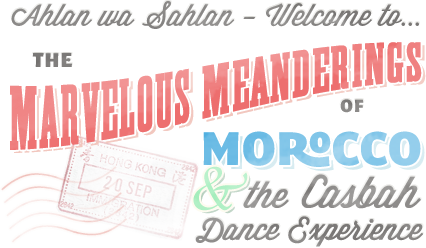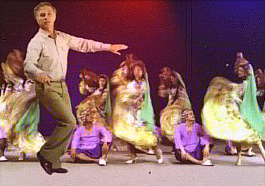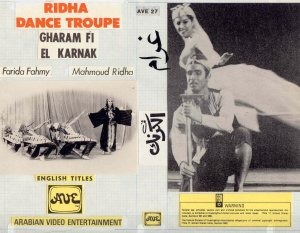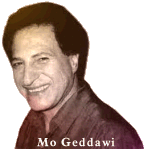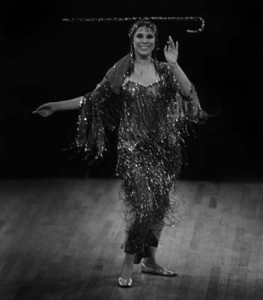Graphics compiled/prepared by Lynette Harris, editor of Gilded Serpent
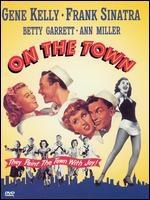
At once warm, enthusiastic, yet incredibly modest about his achievements, Mr. Reda charmed us for over an hour with the story of how his dance troupe came to be. He shared openly about the various inspirations for his choreographies, and how he shaped and enhanced things for the stage. I hope you will find this interview as delightful as I did. It was an honor to be in the presence of this man who even now brims with creativity.”
Interview with Mahmoud Reda (available in the Oral History Archives of the Dance Collection at the Lincoln Center Library for the Performing Arts, NYC)
Conducted by Morocco June 19, 2003
It’s June 19th; we’re in Cairo, Egypt, and this interview is with the founding director of the Reda Troupe, Mr. Mahmoud Reda.
Q: Did you dream about being a dancer as a young boy?
A: Maybe yes and no. Because what I was interested [in], what took my activity, was sports at the beginning. Of course I went to school like everybody, primary and secondary school and university. And during this time I started with swimming. Swimming was my passion. I never thought that I would stop swimming, but I stopped. Because I found it monotonous. The training takes time. You go and come and go; you want to do like 2000, 3000 meters so it takes all day, and during practice you think of what. So I found it monotonous. But I took championships under the age of 16 in Cairo and Egypt in general.
Then I switched to diving. I was also good. My specialty was 10 meters, top from 10 meters, until I had an accident with my back, making 2 and one half somersaults. I hurt my back so I had to stop.
Then I switched to gymnastic. During this time I was also interested in dancing when I saw my brother Ali was dancing. During the Second World War, we had many soldiers from different parts of the world in Cairo, like Americans, and English, Greeks, and Australians, and in their spare time they used to dance. The style [at] this time was, you know, rock and roll, swing, samba, rhumba, and he was very good at this. So I watched. I was young, 15, 16. I admired what he was doing, but I was busy with my sports and studies.
So, I started dreaming of this, and it replaced the gymnastics. Gymnastic also took a lot of my energy and thinking and dreams, but during the gymnastic period we had a trainer from Switzerland, and when he saw that I was dancing a little bit, he told me, why don’t you put some of your dancing steps in the free exercise of gymnastic. I was the first in Egypt to do this, and he was very happy with this. So I started dreaming about dancing when I stopped gymnastics.
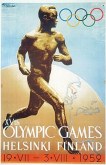
A: Gymnastics training, yes, was in Egypt, but I represented Egypt in the Olympic Games in 1952 in Helsinki.
Q: Wonderful. When and why did you get your inspiration to start the dance company?
A: Yes, that’s a big story! (Laughs) So my first inspiration was my brother. Then came the time of the American musicals; that was the 50’s: Fred Astaire and Gene Kelly in these movies. So I used to see the same movie like maybe 30 times. Every, every night I go, even when I had exams, take my book, and sit in the lounge of the Metro Cinema, for example, and study during the first part – not the movie, but the cartoons, the news – but once I hear the movie start, I close my book and I go. And if I learned something, I try it on the street at night, in the dark street, like this, I try before I forget. So this was my inspiration, Fred Astaire and Gene Kelly, really.
But what I learned from them, I didn’t use in my [work]- I used like art, not specific steps, because I’m doing Egyptian folklore, anyway. Then with my gymnastic ability, you know, I had fitness; I could move very good. I discover I could learn also from the movie, although also from the movie you have to turn things you see left, right, and right, left.
I was also busy with my University studies and exams. On the last year of my exams, there was a group from Argentina, a dance group, performing at the Pyramid Street, someplace called – I don’t know if it’s now there or not – so I went to watch. I liked them very much. They were very, very good! So I went to shake hands and congratulate Alario; he was called Alfredo Alario. He asked me, “Do you dance?” I said “yes.” “Show me.” So I showed him a step from Fred Astaire, a step from Ali Reda, a jump from gymnastic. And they needed a dancer, so they took me.
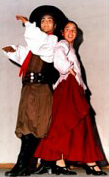
Q: In what year did you start the company?
A: When I came back from Paris it was 1955. I was engaged, in love, I had to marry. It was Farida’s sister, older sister, like 5 years older than Farida. [At] this time Farida- 1955 means I was 25 years old- Farida is 10 years younger than me, so Farida was 15. So it’s like this. We were supposed to fall in love, Farida and me, because everybody’s asking now “Mahmoud is Farida’s husband?” There is confusion. But like I told you, she was 15. Her sister was 20. So just suitable; she’s 20 and I’m 25. We met in the sporting club, and we fell in love, so when I went back from Paris, I had plans also to marry. I could not wait to start the group, [but] I had to work just anywhere to make some money. Being married without money is no good. So I worked as accountant at the Shell Petrol Company, and they transferred me to Suez, so it took me a longer time to start my group. But anyway, when I came back from Suez, I started, and 6 August, 1959, was our opening. The Reda Troupe.
Q: Where did you open, what theater?
A: That was a problem because the problems we had when we started and the problems we have now, funny, is with the Ministry of Culture. Shouldn’t. Should be help, not problem. But anyway, they had all the theaters, so to find a theater we have to go to them, and they gave us problems. I don’t know why; jealous, maybe. It’s a private troupe, and they wanted to have their own troupe. I think this is it, because after our opening, like a few years after, they started their own troupe: Kawmiyya Troupe. Anyway it was an open air theater, in August. It doesn’t exist now; [it] was called Al Ezbekiyya Teatru, means in Al Ezbekiyya Gardens. They gave us 10 days only, and then when we were successful, we continued like a month or so. So this was the first.
Q: Now did you do this alone, or were there others who helped you organize the troupe?
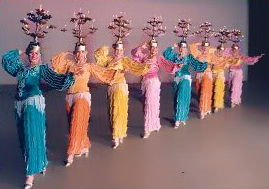
Farida’s father as University professor helped a lot. We learn from him, he is a professor anyway; we learn other things than the art. As a professor he knew a professor in University of Engineering, planning, and things like this. And being a professor and the father of the dancer helped giving importance to this kind of art, because [at] this time the reputation was not good of art; and art is dance and dancers. We had problems. This was one of the first problems. If we talk about problems then we talk about this.
Then the musician, the composer, Ali Ismail… he [has since] passed away. He was a genius, and also he was introduced by Ali Reda my brother. He was a genius in composing and directing [and] collecting the musicians.
Farida’s sister, the one I married, her name was Nadida, she designed the first costumes for the first performance. She passed away because she had a rheumatic heart. So we were married like 5 years; then she died. We had wonderful things and we had sad situations. All life was in our troupe. Life: sad and happy.
Q: Besides you and your brother Ali, were there any other people in your family that had music or dance talent?
A: They all had talent, but as amateurs. My father was a religious Muslim. He wrote many books about Islam, about the Prophet, but he used to like to play oud. And my sister played piano. Two of my elder brothers played violin. My younger brother, 10 years younger than me, went to the Music Institute and he graduated as a composer. Very good. He’s a musician. So, my family’s big. We were 10 brothers and sisters. Now we are 5, because, you know, people die; so we are 5. But originally I lived in a family of 12 people: father, mother, and 10 brothers and sisters.
Q: How wonderful, you always had someone to play with.
A: Yes, yes, this was good because I was near the middle, nearer to the end, you know; I learned from everybody, and I had help from my brothers and sisters.
Q: That’s wonderful! Aside from Farida Fahmy, who were your first dancers, and where did you get them?
A: OK. Because I married Farida’s sister, I became a member of the family; and I actually lived with them in the beginning in the same house. Now Farida grew up – she was 15 when I first knew her – and then when she was 18 and 19, she was going to ballet school, children’s ballet schools, and she was good. So she was the first dancer.
Now we needed dancers to start the troupe. We didn’t have dancers. We had some dancers to work in the night clubs or the movies, but everyone was different. First of all, older people, and then everyone has his own style, one doing acrobat, one doing tap dance, one doing what[ever]. They are not the sort of dancers that you need to have in your group. You need dancers who look the same, the same style, the same technique. So I brought from the boys dancers whom I knew from the sports clubs, like for example, Mo Geddawi, you know about Mo Geddawi. He was a diver, like me, but younger. Had no idea of dance, but as doing dance and taking instructions right and left and fast and slow. So we took him. So people like this. At the beginning we had 7 boys; we started with 7 boys and 7 girls.
The girls were a bigger problem, because of the , as I said, the reputation of the dance, what families will give you their daughters?
Q: Exactly.
A: Once I was in a taxi, I ask the taxi driver, “What would you do if your daughter wants to join a dance troupe.” He said, “I kill her.” So this is a bigger problem, so we were happy with any girl who agrees to dance with us. We were not very choosy. At the beginning, we were not very choosy. So we took good ones, and half-half, and just to start, to open. And I started teaching from scratch, from zero. So this is, apart from Farida, then we had 7 boys 7 girls.
Q: Where did you get the inspirations for your first dances, the first dances that you choreographed? What inspired you to pick those dances?
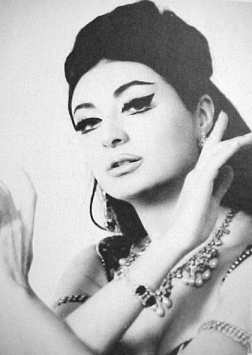
Another dance, I call the Magic Flute, is about a boy in love with a fellaha girl, from the village, and the father doesn’t like him. And he uses the flute and plays music for him and let him soften, soften him mellow, eh? And he dances even with the flute, and he agrees for the boy to marry the girl. Things like this.
So the first program, I used my old, my existing knowledge what I had and did my first program that I called Sketches around characters, folkloric characters.
Q: Are those dances still in the company’s repertoire? Do you still do them?
A: Yes, yes!
Q: Wonderful! How close do you like to keep your dances to the real folklore? Do you want them to be close to what the people really do, or do you want it to be more like a sketch or a tableau? What are your choices there? What do you prefer?
A: Well, let me continue what I was talking, so this is answer to your question. After the first program was successful and was accepted and loved by the people, then I had time to do my research. So I took a group of my dancers, like 5, 6, and went to Upper Egypt. Started from Aswan, studying the real folklore. We took cameras, we took recorders, we took somebody to write, for example, talk to the people and take from them stories and ideas and write the songs. And we started from Aswan until Cairo. Every city we choose, we stay like 3, 4 days. We bring the people, they dance for us, and we record, and record the music, and write [the] stories and everything.
So now, the folklore of Egypt, there is good things and some problems. The good things are, this is like a treasure that nobody discovered, this treasure. But there is lots of repetition, whether in the steps or in the melody; for example, they can take an old melody and put new words, but you remember the melody was another song. So, for example, one girl will dance and the rest of the people, like Hagallah, in Mersa Matruh, they will go like this (claps) for like one hour, the boys; and the girl will do nearly, nearly one step, every step her hips move 3 times.
So you have a treasure but at the same time the material is little. You can not take one step and choreograph a dance for five minutes on stage. Stage and theater audience are professional audience. When you watch the real thing, you will be happy because you can join, because you can sing with them, you can even clap with them, so you feel happy. But if you buy a ticket at the opera house and sit, you don’t expect to see this. Any normal thing, you put it on stage, is not normal. You can not bring a tree from its place and put it on stage, or a house and put it on stage. Even the people, when you bring them, the real folkloric dancers, put them on stage, they look odd, they look strange. Their costumes, they don’t know where to look, they don’t know, and if they do their things, it’s very monotonous. You better go to them and join them, and be happy. But on stage, it’s different.
So what I call my choreography is not folkloric. It’s inspired by the folkloric. It’s inspired.
When you get inspired to do your own choreography, there is a risk. You can change things, and they become something else, and the people won’t like it. I don’t know. There’s no rule. You have to use your taste. For example: I take one step, and I imagine myself one of these people. If I am one of these people, and I have the ability, if I want to do the variation of this step, what would I do? She goes forward, and I backward; side; and turn…. And if she sits down and do the same step, what she going to do? So I do all the variations possible to this step. If you’re lucky, then it will keep the same spirit. If you’re not lucky – it’s like developing Arabic language, then it becomes English. Not good. So, if you manage to keep the spirit in spite of what you did to these movements, you are lucky. I was lucky. So I did all what I could, eh? to put variations of the same step, but still the people watch it, and they recognize themselves in it.
Farida’s father had something to do with this. He sits in the audience beside some fellahin people, villagers who came to see the show. And of course you know how the dancers fellahin with the dress, it’s a bit different, and even the jar is painted, eh? not like the original one. Then he would say “What’s this? This is not fellahin dance, and this is not a fellahin jar.” So the people will turn to him and tell him, “No, this is us, and this is our jar, and this is our dance. So the idea, he’s testing, and he comes very happy and tells me what happened. They recognized themselves, although there is like 90 % extra put on the dance.
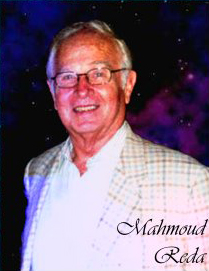
A: Yes, to be. Yes!
Q: And I also don’t think it’s luck. I think that was your creativity. I think that was the genius to take the basic and make it in a way bigger than life so that people could see where the heart is.
A: Yes, probably, good, what you say, but when I am doing this, I don’t know what I’m doing. I’m just inspired and I do things. Maybe later I can analyze myself, analyze what I did, and you can analyze me, but when I’m doing this, I’m doing what I feel.
Q: But that’s not luck. That’s from your heart. That’s different.
A: Yes, good, good. It’s good that, it’s luck that I have this heart!
Q: Yes, that, yes! Now from what you tell me the audience understood what you were trying to do.
A: Yes, definitely, yes,definitely!
Q: This was excellent! Do you have a favorite piece that you choreographed? Is there a favorite dance that you did?
A: I have favorites. You know, some dances I did, one or two that I didn’t like, I cancelled them immediately. Like, for example, when you try to teach the audience something. Don’t teach. The police department here in Cairo, they called me and said, the traffic policeman is not welcome from the audience. Can you do something to let the audience sympathize with the traffic police? So I did, a dance like this, and the people didn’t like it. I stopped it first performance. The dance was good choreography, but you’re teaching the audience to respect them..? No, no, no. So!
But I have many favorites in every program. Like I do 12 dances, I like this dance better that the other. Like the stick dance. I was famous for that; I did my own stick dance; I performed it; so this is one of the favorites. The Magic Flute is one of the favorites. And there in the Andalusi the (Muashahat), I have one like (Layalat Awalem), one of the Andalusian dances, so I have many favorites.
Q: Do you decide first on the style of dance you want to choreograph and then look for music for it, or do you hear a piece of music first and that inspires you?
A: You know, inpiration is a funny thing. It comes from nowhere. For example, if I’m driving in the village and I see a woman with nice costume, so this inspires me for a dance. If I hear nice music, it inspires me, and if I hear a story or somebody tells a joke, it inspires me. But concerning music, we did everything, we did every way. It depends on the situation. For example, when I started my first performance, I didn’t have the musician, but I had the ideas, I had the steps, I had the ideas for choreographies. I had the boys, teaching them. So I choreographed nearly all the first performance without music. Somebody plays tabla, I tell him: 8 counts here, 16 counts there, change the rhythm. And then when I found a musician, Ali Ismail, who was introduced by my brother, Ali Reda, I showed him the dances, and he wrote the counts, and he composed. So this is one thing.
We had diffuculties because I count differently than the musician. For example, a musician counts Masmoudi rhythm: DUM DUM Rak-a-tak-a DUM Rak-a-tak. This is one. When I choreograph or teach I count 2. (repeats same rhythm, but twice as fast) Easier. So he composed more music than what I wanted because I gave him more counts, and he thinks this is more bars, but this was the first performance, choreographed first on tabla and then he put the music.
Later when we knew each other, then I tell him the idea. The idea way, you tell him about the dance, and I want the dance, for example, the Saidi, boys and girls. I will start with the boys with the sticks, for how many counts, and then the girls come, and then we put them aside, and there is a solo boy and solo girl. And we discuss, and this dance will take like 5 minutes. Then I leave him to compose, he goes home and he compose. And I start doing some experiments with steps, on the rhythms I gave him. When he finish the composition, he gives me a piano version, he records a piano version. Then I listen, and I can tell him this is too long, this is too short, but I use this piano version to really do the choreography, and then when he comes and sees the choreography, he gets inspiration from me. So I get inspiration from his piano. Look, listen! He gets inspiration from the way we talk at the beginning, it inspires him. And then when he gives me his piano, and I get inspiration from this piano, I do the choreography. And when he watch my choreography, he gets more inspiration, things he didn’t imagine, so he goes and plays more, and then he makes the composition, not only the piano, the arrangement. When I hear the orchestration, I get more ideas, and now the violins are saying something, and the drums are saying something else, then I correct my work and put more ideas in it. And like this. We go like this until it fits.
And this is the perfect way, but it’s very difficult because you can not have a musician handy beside you to work together. But this happened for some time.
Q: It’s a lot of work.
A: Yes. Then he became famous, and he didn’t have a lot of time for us. He became famous doing songs and background music for the cinema, for the movies. So then I remembered one time I was doing choreography of a big opening. And I call him at home, and he’s asleep. I call him after 5 minutes, and he went out. After 10 minutes, he’s in the bathroom. But I need this.
So I took my wife. My wife was Yugoslavian – you know, after the first wife died. She didn’t know Arabic. I took her; I took my bag, my pajamas; and I went to his house. He was there working [on] something. I told him, “I am staying here.” My wife went to his wife. She doesn’t know English and my wife doesn’t know Arabic, and I don’t know how they communicated. We left them. And I stayed with him 3 days and nights. He plays and I dance. I show him what the girls should do, and he writes. What the boys should do, and I dance my part, and he writes. And then like 1 or 2 o’clock at night then I asleep on the couch. 3 or 4 o’clock he wakes me up, “Continue.” We continue, OK? We did like this 3 days and nights, and the show went on.
And later he told me, I have a confession. “What confession?” “The first night, I was not doing your music. I was writing a movie and you were dancing, but I was writing the background music for the movie.” I said, “Why you let me dance?” He said, “You gave me inspiration.” “And why you wake me up at 3 o’clock in the morning?” He says, “To keep me company!” (laughter)
Q: At least he was honest.
A: After the first night, the next day when we were doing this he said, “Look, what we did yesterday I don’t like; let’s do again.”
So we did music first, and we did dance first, and we did music and dance together, every way we tried. It depends, you have musician, or you don’t have musician.
Q: Does each dance get easier to choreograph or are there always new problems to deal with?
A: The problem increases with time. Because when you choreograph one dance, you still have many ideas and many stories. But when you choreographed 400 dances, first of all, you want to do something you yourself didn’t do before and somebody else didn’t do before you. So it leaves a big problem to find a new idea, a new style, and new steps. After 400 dances you choreographed, so the problems increase.
But some dances you do quickly. When I start to do the dance, sometimes in 1,2,3, hours I finish the dance. Sometimes it takes longer. There is no rule. You don’t know why. So you come next day, continue. The best thing is to choreograph the dance very quickly, so you do it in one mood, because tomorrow you don’t know what mood you’re in so you have different moods in the same dance. But finish the dance quickly and then you can correct and finish and do the finishing touches later, but do the whole thing very quick.
Q: What inspired you to choreograph your Sugar Dolls tableau?
A: This was one dance between a program that looks the same, you know, it’s not folkloric dance –
Q: It’s theater.
A: The sugar dolls exist.
Q: Yes, from the Mulid.
A: Yes, Mulids, religious festivities. I did also the horse dance. There is no human being dance like horses; is a horse dance like human beings. And there’s mermaids also. These are dances go around the same idea which is not folkloric dance but is folkloric item. This time I choose these 3 dances in my program, and I don’t know from where. I remember the horse dance, I was [at the] sports club, and it was Easter, and people eat eggs and things like this in the morning, so I was looking from the balcony. They had horsemen bringing the horses, and they were doing a performance. So why not do this in human beings, not in horses? And sugar dolls: I must have been walking in the mulid and I saw the dolls and I thought of a dance.
Q: Did the audiences like it? Did they understand it?
A: Yes, there’s nothing to understand. It’s sugar dolls. They like it very much; the costumes looked nice, the music was perfect, the dance was good.
Q: Your Raks al Balas: what inspired you to do a dance about it?
A: I think this is the first thing you get inspired by: a fellaha girl with the balas and she goes to the Nile to fill the jar. And if you will look carefully you find that when the balas or the jar is empty, they put it like this, the mouth down, to the side, because it’s empty. But when it’s full, you have to put it like this because it will spill. And then when the girls are by the Nile, filling the jars, becomes heavy to carry. And some boys go flirt and help at the same time. So this is normal to get inspired. First thing about the fellahin is the woman with the jar.
Q: What movies have you been in? I’ve seen 4 or 5, but how many movies have you made?
A: There is different kind of movies. There are movies with me alone, or with me and my group took part doing some dances, 1 or 2 dances. That’s before we did our own movies. So I even don’t remember; sometimes I watch television and I see, is me or not, or this is Ali? So I did a lot of these things. But as Reda Troupe, we did 3 movies: “Mid-Week Holiday”, “Love at the Corner”, “The Thief of the Paper”. The paper is lottery paper and I was accused of stealing this paper because I bought it from somebody, and things like this. And these are the 3 movies that I was starring as an actor, and dancer, and choreographer, and teacher. 3 whole big movies, feature movies. Other movies are just, we took parts in.
Q: OK, then I’m assuming, because it was you, you acted in it and, in a way, directed it, that you were able to have your dancers shown the way you wanted them to be seen. That they were able to film them the way you wanted.
A: Yes.
Q: And what about the other movies. Did you ever have problems where you want them to show the dance in one way but the director wants to show it in another way?
A: Yes. First of all, it’s very good for a choreographer to know about other arts, especially photography. If you know about photography, then it will help performing for the movies or for television because usually the choreographer stands beside the director of the movie. They talk together: I want the boys to be like this; I want the shot to be from here; and the lighting. If you know about photography, cameras, lenses, lighting, costumes, it helps choreographer. So, lucky my hobby was photography, so I know about cameras. For example, when the director of photography says, put me the lens 50, you don’t know what lens 50 is so you don’t know what’s going on. If you know, it helps. When you say put me 50: normal lens; 75: telephoto; 25: wide angle. You know wide angle you’re going to have big place, so you know what to do. So I knew about this because my hobby was photography.
And then you must know that your work on theater on stage is different than what the cinema wants, so you must respect the director’s needs. You don’t insist, I must see the whole. No, he wants close shots. It is his work, so you must help. It’s not going to be exactly what you choreographed. This you must know. You don’t insist on having the full frame and all this; you must respect the director’s needs. And then they will cut and show the audience, for example, clapping, or somebody talking, 2 people talking. Has to be. It’s not like this on stage. So you have to expect this.
But working with my brother Ali, he was the director of these 3 movies. We were stuck together. We talk about everything, not even during the work, but during the rest, and at night, and when we were having lunch and dinner, we talk about what we are going to do, so we exchanged ideas.
Q: That’s a wonderful opportunity, actually. When I brought my group to your rehearsal at the Balloon Theater in 1978, was it a surprise for you? Were you surprised that there were dancers, like say, from America, that wanted to see what you were doing and came to Cairo just to see it?
A: It was not as much a surprise as [that] I liked it. It was very nice. It was very nice of you to bring them to me. And we had dance room there, and they watched. I don’t know if we took lessons or not.
Q: Yes, you did, you gave them a class. I took pictures.
A: This was very nice.
Q: They were thrilled. We were all thrilled that you were so kind as to let us come to the rehearsal and that you even let them join in the class for your troupe. This was very generous. We really appreciated this.
A: Yes, of course, why not? This is normal.
Q: What were your impressions the first time that Delilah brought you to the US to do a tour? Were you surprised that there were so many people in America that were interested in raqs sharqi and that knew who you are and wanted to learn from you?
A: Very much, very much surprised. Because, you know, first of all, I did 8 workshops in 2 months. 8 workshops! Every week in a different place. Either going by plane or by motor home because she and her husband had a motor home. So we moved with it and sometimes with airplane. And the number of students was so much! I remember in Chicago there was 240 dancers. But this was something new fashion. This was 1979. Was new experience for them, and they all came, 240. And it was between 240 and the minimum was 150 girls, all complete with belly dance costume and the veil and the cane and the sagat and the Arabic name! (broad smile) Yes, they didn’t know! They expected, you know, me to teach the sagat, and the cane, and the veil, and, and….
Q: All in one day!
A: But it was a very, very, very good experience.
Later the number is not like this now. Because at the beginning, they don’t know what it is. Some people think it is good for the health, and some people are artists and they want the art. And other people, it’s good for the husband, and she can move and dance in front and make him happy. And everyone has different reason. But then later, I think the serious ones only stay. So if I go to America now, it could be 100 some places, but it’s between 50 and 100.
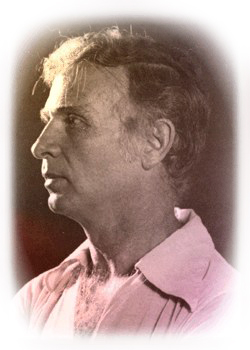
A: Yes, yes. And I’m really proud of all this! America and other places, also now the whole world is doing this! I’m really proud because people who study, they’re not all of them professional dancers who are going to make money out of it, no, but they spend money. Sometimes they come from other states either by plane or by car, driving 6 hours. And they pay hotels for like 2 nights. Some people came from Australia when I was teaching in San Francisco. People came from Canada and Australia. So they pay the flight, they pay the hotels, they buy costumes, they pay the classes – all this and they are not professional dancers. So I’m really proud of this, I admire this very much, and then later, when 2 years ago in Los Angeles when I went with Farida.
Q: Yes, I was there.
A: There were 270 students in the class! 270! I want to tell you somethng very strange also. Last year when I went to Argentina, in Buenos Aires, tell me how many. Just say a figure how many students in front of me in the class.
Q: About 350
A: 620!!!
Q: Mish maoul!
A: 620 girls in the class!
Q: How big was the room?
A: It was a cultural center, very big room, but they stopped accepting because there was more people. They said no, that’s enough. And they are putting screens for video to show if you don’t see good, and stage and microphones. The dancers took 8 hours class every day. 4 hours from me, 2 from American girl, and 2 from Argentinian boy. 8 hours class, 620.
Q: Mabrouk!
A: Last month I was in Brazil, 150.
Q: Yes, when I was in Brazil, I had those kind of numbers.
A: So I think maybe if we stop dancing in Egypt but the whole world is dancing! If for any reason Egypt stops dancing – I hope not! But the whole world is dancing anyway.
Q: God forbid! Yes, the whole world is dancing.
A: How many groups do you think dancing my choreographies in America alone?
Q: Hundreds. Hundreds and hundreds, and some are using the music, and some are seeing the videos, and the films and being inspired by it to try their own ideas.
A: I am so proud of this.
Q: Yes, you should be. You’ve inspired so many people, you’ve given such a gift to the world. It’s just marvelous! Which is why we’re sitting here making this interview today, because I want this to be in the Lincoln Center Library so that years from now people who want to know where and how, they can see this and understand maybe a little bit more and appreciate it.
A: Very good.
Q: And I have a question that isn’t on here. Do you think that the people in Egypt in the Ministry of Culture, that they appreciate what you’ve done, what people like you have done, or that they understand what is happening with this [Ahlan wa Sahlan] Festival? Do you think that they understand that without you, without people like Raquia [Hassan], there wouldn’t be this interest in the dance in the rest of the world?
A: Well, I tell you something. 99 % of the Egyptian people love us and appreciate what we do, and they understand what we’re doing. Unlucky that the 1%, that it’s not that they don’t understand. They have other reasons. They’re against us, and they are the Ministry of Culture.
Q: Yes.
A: I don’t know. I don’t want to talk about this because we had always problems with the Ministry of Culture when we started and now. And anyway, I am out of working. I am very lucky now because when we became government – it was 1961, like after 2 years of being private, we became government. We started good; everything was good. But now – we had ups and downs – now it’s the big of being down. And I left because when we joined the government we became government employees. We are artists, yes, but without knowing, we became government. And as a government employee, when you are 60, you retire. So I retired 15 years ago. They have kept my troupe, the Reda Troupe, the same name, the same choreographies, and everything, but I am out, and this is very strange.
I wrote once in the newspaper, I said, you are taking the shadow, and leaving the original. They’re taking the shadow. Because I am Mahmoud Reda. If I go to America and live there, I will have the Reda Troupe around me. If I go to Switzerland, I can make the Reda Troupe in Switzerland. But you’re having the shadow. Because I am the original. But anyway, I’m happy because I was not happy working with them.
So I am happy with what I did. And I tell you something, when an artist does something, he doesn’t have at the beginning, big goals and objectives. You do the thing because you love it. Eh?
Q: Yes, Because it has to come out or it dies.
A: You start painting and drawing when you are a child because of what?
Q: Because you love it!
A: There is not objective or no big goal, so you love it. Then little by little, you find out that the people love what you do, so you start thinking of the people when you do your work: [will] they love this, they don’t love this.
So we had a nice time. We loved what we were doing. We lived in the best hotels, like Waldorf Astoria, and sometimes we slept on the floor some places. We had good food; we had nothing to eat. We traveled the whole world more than 5 times. We performed with my troupe, not as a teacher, at least 10 times in America, and the whole world, Japan, and Africa, and everything. We had a perfect time; we had a lovely life with Farida and me and the musicians and everybody.
Now, we feel the appreciation of the people, like for example, if I walk in the street and I meet an old lady passing me, and then she recognize me, so she comes, shake hands. She says, “You don’t know me but we love you.” If I go with guests and invite them to a restaurant and we eat, all of us – I remember once in Alexandria in a fish restaurant, I had like 7 people, and we ate a lot: fish and shrimps, and [more]. Then I went to pay them and they didn’t want my money, says, “No, It’s enough when you did the stick like this in the telelvision.” And doesn’t take money. When I come from abroad at the airport, how the people, the immigration officers, customs, love me, and nobody opens my bags. Welcome, please!
I don’t want anything more, I don’t want anything. When I come I was watching the movie I did in Brazil and how the people loved me and received me and kissed me and all this. I don’t want anything from the Ministry of Culture, especially now. I don’t need. I have enough love and enough appreciation. So this 1%, forget.
Q: It’s their problem, it’s their jealousy.
A: Their problem.
Q: This morning in the hotel when I called you, I was downstairs by the telephone operators. They’re young girls, they’re young enough to be my grandchildren. When I called and asked, “Mumkin kelim Mahmoud Reda,” they said, “You know Mahmoud Reda??” I said yes. “You know Mahmoud Reda??? Oh we love him, we love him.” So the telephone operators in the Fundook Victoria, they love you!
A: So what more you want. I’m lucky, I’m lucky.
Q: Exactly. What a present! What a wonderful thing to have. Thank you so much!
A: Thank you very much.
Q: What a pleasure! You’re a delight! And thank you for your kindness in giving this interveiw. And I really – and I’m thrilled that I know you and that I have known you for so many years…
A: Yes, goes back to a long time ago, not that we are old…..
Q: We were both children…
A: You know, funny. When I was younger, I loved to say jokes. So when I say a joke about an old man, I say he must be 50: 50 years old is old man. So I say the joke when I’m 50, so the old man in my joke must be 60 or 70. But now when I’m 73, how old should be the old man? (Laughs)
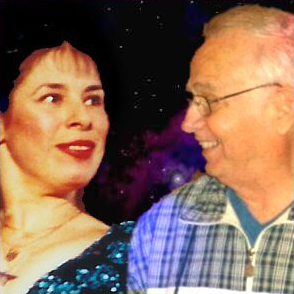
A: Anyway, I don’t feel that age. Eh? And I still think there is a mistake in the birth certificate. There is a terrible 20 year mistake in my birth certificate. I don’t feel 73.
Q: But it’s also when you have something you love, and you can do what you love, then you never feel old, because it gives you energy. It gives you light. It makes it worthwhile to wake up in the morning.
A: Yes, yes. We’re lucky people!
Q: Yes, we are. We’re really lucky! Thank you so much!
A: Thank you!
